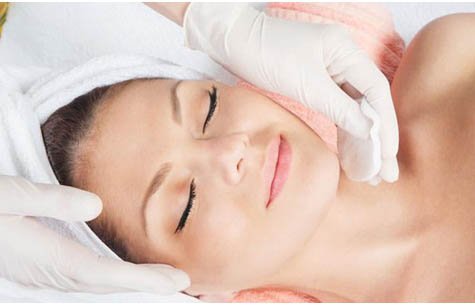Chemical Peeling in Rohini, Delhi by Dr Ashok Tandon, Plastic Surgeon

Introduction to Chemical Peeling
Chemical peeling has become a popular cosmetic procedure for achieving smoother, younger-looking skin. This non-invasive treatment is known for its effectiveness in addressing various skin concerns, including acne, hyperpigmentation, and signs of aging. Dr. Ashok Tandon, a renowned plastic surgeon, offers top-notch chemical peeling in Rohini, Delhi tailored to individual needs.
Understanding Chemical Peeling
Chemical peeling involves the application of a chemical solution to the skin, which causes exfoliation and eventually peeling off the top layers of the skin. This process stimulates cell turnover, revealing fresher, healthier skin underneath. There are different types of chemical peels, ranging from superficial to deep peels, each targeting specific skin issues.
Benefits of Chemical Peeling
One of the primary benefits of chemical peeling is its ability to improve skin texture by removing dead skin cells and promoting collagen production. It also helps in reducing acne and acne scars, evening out skin tone, and diminishing the appearance of fine lines and wrinkles.
Chemical Peeling Procedure
Before undergoing a chemical peel, patients consult with Dr. Ashok Tandon to discuss their skincare goals and assess their candidacy for the procedure. Preparing the skin involves avoiding certain skincare products and medications that could increase sensitivity. During the peel, the chemical solution is applied to the skin for a specified period, after which it is neutralized and removed.
Aftercare and Recovery
Following a chemical peel, proper aftercare is crucial for optimal results and minimizing side effects. Patients are advised to keep their skin hydrated, avoid sun exposure, and follow a gentle skincare routine. Depending on the depth of the peel, downtime can vary from a few days to a couple of weeks, during which mild redness and peeling may occur.
Why Choose Dr. Ashok Tandon for Chemical Peeling in Rohini, Delhi?
Dr. Ashok Tandon is a highly skilled plastic surgeon in Rohini with years of experience in performing chemical peels. His personalized approach ensures that each patient receives the best possible treatment plan tailored to their unique needs. Moreover, his clinic is equipped with state-of-the-art facilities to ensure a comfortable and safe experience for every patient.
Patient Testimonials
Many patients who have undergone chemical peeling at Dr. Ashok Tandon’s clinic in Rohini, Delhi, have shared their positive experiences. They praise Dr. Tandon’s expertise, professionalism, and the remarkable results they have achieved through his treatments.
Conclusion
Chemical peeling is a versatile cosmetic procedure that offers numerous benefits for improving skin health and appearance. Under the expert care of Dr. Ashok Tandon in Rohini, Delhi, patients can achieve remarkable results and regain confidence in their skin.
FAQs
- Is chemical peeling suitable for all skin types?
- Chemical peeling can be customized to suit different skin types and concerns. However, individuals with certain skin conditions may not be suitable candidates for the procedure.
- How many sessions of chemical peeling are required to see results?
- The number of sessions needed depends on various factors, including the patient’s skin condition and treatment goals. Dr. Ashok Tandon will assess each patient’s needs and recommend an appropriate treatment plan.
- Are there any risks associated with chemical peeling?
- While chemical peeling is generally safe, there are potential risks such as skin irritation, redness, and hyperpigmentation. These risks can be minimized by following proper pre and post-peel care instructions.
- Can I wear makeup after undergoing a chemical peel?
- It’s best to avoid wearing makeup immediately after a chemical peel to allow the skin to heal properly. Dr. Ashok Tandon will provide specific instructions on when it’s safe to resume makeup application.
- How long do the results of chemical peeling last?
- The results of a chemical peel can vary depending on factors such as the type of peel used and the patient’s skincare routine. With proper maintenance and sun protection, the results can last for several months to years.
